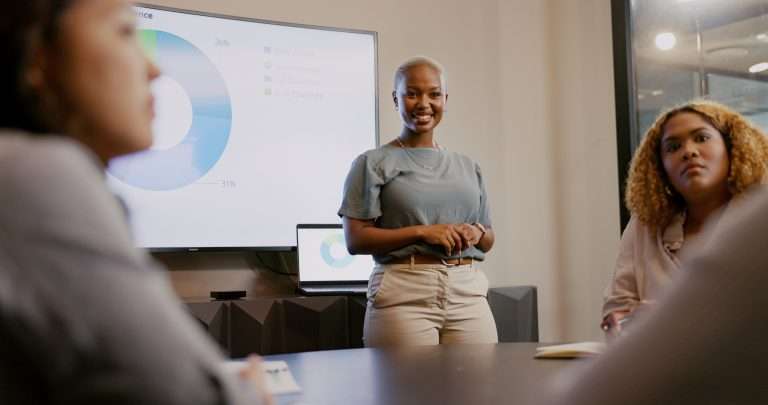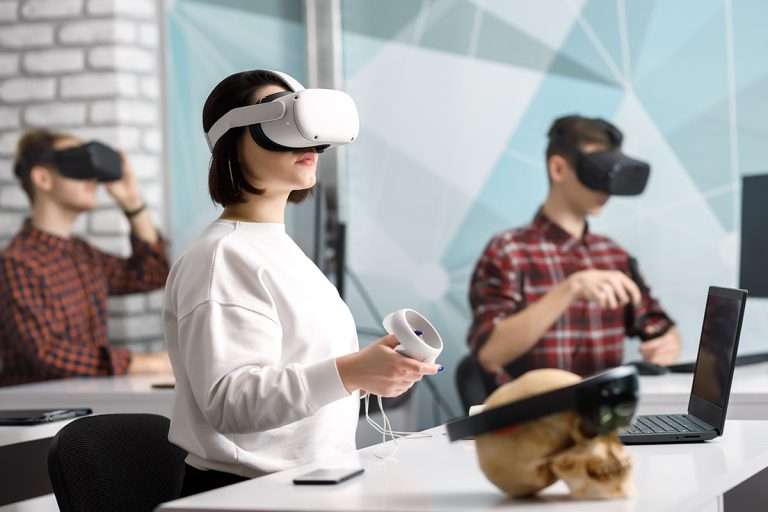A Gamification Myth
In the instance of a recent Twitter conversation, truth emerged that some of the “myth” comments about gamification stemmed from a single study that one astute Twitterer, Shannon Tipton, called as “full of holes as Swiss cheese.” The study authors did not provide any information about the two lessons being compared except for this: 1) the lessons were supposed to teach students how to divide fractions, and 2) one was called “basketball divide fractions” lesson, and the other was simply called “divide fractions.” The authors used their proprietary platform to conduct a controlled, randomized study to compare two lessons that teach students how to divide fractions.
The study suggests (but does not directly say) that one lesson was gamified in some fashion, but we aren’t told how. The other lesson was not gamified. The results overwhelmingly favored the non-gamified lesson. Kids learned faster and performed better on subsequent fractions tests that required them to divide fractions. The gamified approach resulted in lower test scores, even though kids spent longer in the lesson by choice. The authors indicate this increased amount of time spent on the lesson was 100% voluntary; the assumption they seem to want readers to have is that students had more fun doing one lesson than the other. From that single study that omits tons of relevant information, some folks conclude that “gamification of instruction doesn’t work.”
What’s Missing From this Study?
Let’s think about what we don’t know here:
- The quality of the game/gamification design: How many game elements did they use? Were they used optimally? Was the gamified solution too complex, so students expended too much brain power figuring out rules and too little learning fractions? Or was it motivating the wrong behavior? (e.g., Rewarding progress versus mastery. In scenarios that focus on rewarding progress, learners earn points simply by completing a problem. Getting the problem correct is not a criterion for earning a reward. Learners could also have been rewarded for speed, which could push them to guess the right solution rather than truly make an effort to solve for the right answer.)
- The equivalency of the quality of the instructional design across the two solutions: Were both lessons, in fact, teaching identical principles and using some of the same techniques? Did they each have a solid instructional design? (Example: did they both employ worked examples, which reduces cognitive load and increases learning efficiency?)
What the study illustrated was the basketball dividing fractions was less effective in helping students perform well on a fractions test than the lesson that did not include the gamified elements used in the basketball lesson. If I were a game designer on that lesson, I would want to go back to it and figure out what I’d done wrong in gamifying the lesson. I would not be ready to assume that gamification itself was the problem.
How to Effectively Use Games and Gamification
Bad gamification or game design is going to yield bad results, just as bad instructional design is going to lead to poor results. That doesn’t mean gamification or games don’t work. So, how do you use games and gamification effectively? Here are some principles that will help you maximize efficacy.
1. Keep Game Complexity Simple
This is particularly important when you are using a game to support relatively short lessons. Do not over-complicate a learning game or gamified lesson with lots of game mechanics (aka rules) or game elements. Elements are things such as rewards, scoring, chance, strategy, resources, cooperation, competition, aesthetics, theme, and story. Doing so increases the cognitive load on your learner and makes it harder, not easier, to learn. (See this explanation of cognitive load theory, which was first identified by John Sweller in 1988.)
2. Reward Players for Performance, Not Completion
If you are going to award points within the game, those points need to come from demonstrating knowledge or skill, not just progress. (See Karl Kapp’s book, The Gamification of Learning and Instruction. There’s an entire chapter on research studies and another on how to use rewards effectively – and what not to do.)
3. Be Cautious with Leaderboards
Leaderboards can be fun, but be sure you focus on more than who is on top. Consider letting people see more about themselves rather than just what other players are doing. We are all very interested in ourselves so we like to see our rank relative to others, improvements we’ve made over time, personal bests, etc. We also like being part of a team. So consider team-based comparisons (e.g., by location, role, etc.) as opposed to just head-to-head individual comparisons.
4. Align the Game Element Choices to the Learner’s Actual Job Context
In other words, avoid competition in a game if the job requires cooperation/collaboration. If you want to incorporate “chance” into a game (and this is a handy game element for balancing out gameplay), make sure you use it appropriately. This means matching the types of chance a player encounters in the game with the way chance occurs in the real world.
For example, if you are teaching project management, a great use of chance is to have it come up as a factor that requires the player to consider alternate strategies. “One of your teammates just called in sick. Identify two other viable strategies for meeting today’s deadline.” “Your client just called to say she’s going to miss her deadline. She asks, ‘How can we still hit the ultimate milestone? I don’t want the project to slip overall.’ What do you do?” (Play to Learn: Everything You Need to Know About Designing Effective Learning Games, the book I co-authored with Karl Kapp, outlines how to combine learning design and game design together to maximize the impact and efficacy of games.)
5. Make the In-Game Goal Align with the Learning Goal
Again, mirror job context, and do this in a reasonable way that “makes sense” for the learners who will play your game or complete your gamified lesson. If the real-world scenario is to achieve certain quality ratings for a medical facility, for example, mirror that goal within the game. This reduces the cognitive load on your learners as they don’t have to distinguish what’s true in the game from what’s true in their job context. This blog post on playtesting features a game where we worked hard (via multiple iterations) to get our game goal and rewards just right to maximize learning.
6. Stop Thinking You Have to Make the Game Super “Fun”
Fun doesn’t really matter if the focus is on optimizing the learning outcomes. What matters is relevance and a game design that reinforces and enhances the instructional design. A game needs to be “fun enough” to keep your player/learner involved in that game. You also need to re-think what “fun” is. Kevin Werbach of the Wharton School of Business does a great job of breaking down what people actually find fun, and it includes things such as strategizing, problem-solving, and collaborating – all skills required in many jobs.
Additional Resources
Want more guidelines on effectively using games or gamification in instruction? Check out these resources:


























